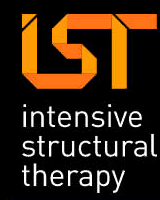How to Use the Homeostatic Maintainer
The Homeostatic Maintainer – a tool for the pragmatist
From a purely systems perspective, this is an incorrect concept – every part of the system should equally influence every other part. I find however, in reality, systems often have an individual or interactional pattern such as conflict avoidance that keep the system from changing.
In IST, the concept of the homeostatic maintainer is used to identify the patterns at work in the system that are maintaining the dysfunction. The therapist’s goal is to ascertain these homeostatic maintainers and to use these observations to direct a strategy to transform the system.
Other disciplines provide richer descriptions of families that do family therapists: playwrights, novelists, sociologists and even some movie directors depict families with more colour, indeed, more phenomenological detail.
But our interest here is not to describe the family in all of its complexity. After all, family therapy is neither anthropology nor literature; it is healing which is achieved by changing systems. And to change systems with the greatest efficiency, we must look for the most parsimonious description, which is the identification of key individuals) or interactional patterns that are impeding change.
Identifying the homestatic maintainer
A crucial task for the IST therapist is to identify the homeostatic maintainers – the individuals and the isomorphic interactional patterns which contain the homeostatic maintainer behaviour. To determine the homeostatic maintainer, the therapist perturbs the system and observes who reacts to return the system to its status quo, and by what processes.
For example, a 15 year old, in a rage, smashed some of his his grandmother’s living room furniture – for a third time. When asked (the therapist’s perturbation): “what did the police say?”, the grand mother replied: “I would never call the police on my grandson.” No wonder he doesn’t change his behaviour.
There is another way in which the therapist can speculate on who and what forces are maintaining the homeostasis. The “science of hunchiology” is utilized to approximate these factors based on clinical experience. While of course not so reliable because they are not based on direct observation in the session, these clinical intelligences can be, nonetheless, extremely useful. This is especially true since obviously, there are certain situations when not all forces can be brought into the therapy room, ie: a family is that is overwhelmed because of poverty – and the force maintaining the status quo is vague, amorphous poverty.
In some systems, the homestatic maintainer is interactional patterns that underlie and support the homeostatic mechanisms.
One often seen pattern is triangulation – where the child is caught between a parental disagreement disagreement. They ask her: “is mommy right-or is daddy right?”
Treatment Planning
A very useful characteristic of the homeostatic maintainer parameter is that it can be utilized for treatment planning. In other words, the various individuals, social forces, and the isomorph in which they are involved can be utilized as markers with which to direct treatment. Furthermore, they can be utilized as markers to ascertain the effectiveness of treatment. In other works, if a homeostatic maintainer has not been transformed and the isomorphic patterns have not been transformed it is often a clear demonstration that the therapy has not been successful thus far.


